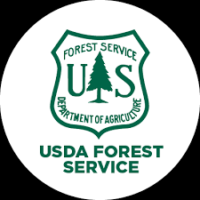
The Mono Lake, Mammoth, and White Mountain Ranger Districts of the Inyo National Forest will
implement prescribed fire projects in the upcoming winter and spring months as conditions permit.
Crews take advantage of snow on the ground to complete vegetation pile burning in locations
throughout the forest. Thinning and pile burning restores the forest to more natural conditions.
Crews then focus on these areas for prescribed fires to help return the natural fire cycle.
Prescribed fires are planned months in advance. Implementation of all treatments are only initiated
after following standards written into a Prescribed Fire Burn Plan. These plans define the
prescription parameters which include temperature, wind, relative humidity, fuel moisture, etc.,
ensuring the prescribed fire meets the project objectives.
These treatment units are also prepared in advance for ignitions by local engine and hand crew
resources. They will construct handlines and insert extensive hose-lays around the treatment units
in order to help ensure a higher level of control during ignitions and holding. The burn plans also
identify the correct level of fire personnel to have in place upon ignition and days following.
These requirements are typically exceeded during the day of ignitions and kept in place until
completion. Fire intensities can be managed to an acceptable level for holding resources by
following those parameters written into the burn plans for each unit.
These projects help to reduce heavy accumulations of understory vegetation and woody materials.
These treatments are developed in conjunction with pre-identified suppression strategies for the
protection of Wildland Urban Interface (WUI) as well as meeting objectives for habitat
enhancement/restoration and forest health. In time these projects will help to reduce the risk of
catastrophic wildfires and their inherent risks to firefighters, public, and our forests.
-more-
Projects may be completed in:
• June Lake Loop; piles, up to 300 acres.
• Bowl Units, east of Hwy. 395 near June Lake Junction (south), prescribed, up to 300 acres.
• Hartley Units, between Hartley Campground and Hwy. 395, prescribed, up to 300 acres.
• Lakes Basin, piles, up to 542 acres.
• Sherwin Piles, north of Shady Rest Campground, and by Sherwin Creek Campground, up to 80 acres.
• Antelope Units, five miles northeast of Mammoth Lakes and one mile south of Owens River Road in the
Antelope Springs area, prescribed fire, up to 660 acres.
• Dry Creek Units, four miles north of Mammoth Lakes and one mile north of Scenic Loop Road, up to
300 acres.
• Pit Units, three miles to southeast of Mammoth Lakes, near the Sherwin Creek Campground,
prescribed, up to 90 acres.
• Smoke Units, northeast of Mammoth Lakes, east of Hwy. 395, between the Geothermal Plant and
Smoke Bear Flats, up to 320 acres.
• Bishop Creek; piles, three acres by South Fork community, and one acre by Aspendell.
• Sunny Slopes, piles, one acre, south of Sunny Slopes by Tuff Campground.
As prescriptions are met, more detailed project information will be released.
Smoke may be visible at times from Highways 395, 158, 167, 120 and 203, as well as the
communities of Mono City, Lee Vining, June Lake, Mammoth Lakes, Crowley Lake, Sunny Slopes,
and Tom’s Place. All prescribed fire activities will be coordinated with the Great Basin Unified Air
Pollution Control District in order to provide the best smoke dispersion and to reduce impacts to
Eastern Sierra communities.
When you see prescribed fires during the cool times of the year, please understand that we are
creating healthier forests and wildfire resilient communities: for today and future generations.
###
USDA is an equal opportunity provider, employer and lender.

















